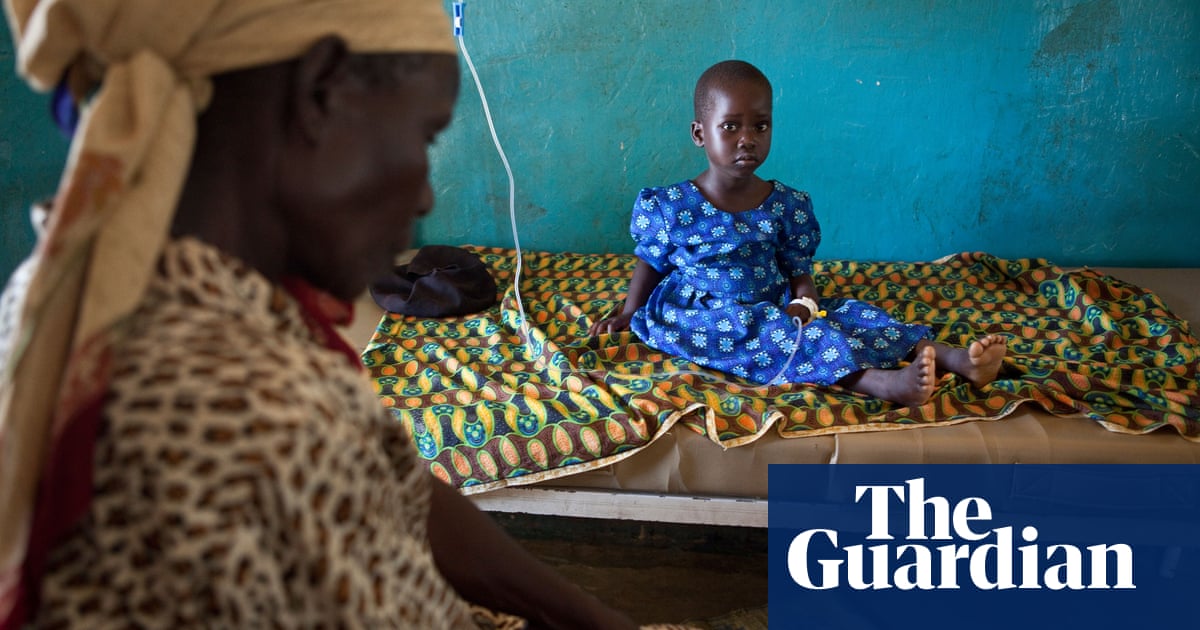By the age of six, Babirye Zainab had already contracted malaria several times. Her grandmother did not see it as a big problem though. “I would treat her with antimalarials and she would be all right,” she says.
But then she developed a fever and started to have convulsions. Her urine was the colour of tea, and her grandmother, who shares the same name, was worried enough to take her on a motorbike to the local health centre.
“We were discharged. A month later, she had another episode. Since then, she has experienced quite a number of episodes of passing tea-coloured urine,” she says.
Zainab is part of a medical riddle affecting ruralUganda.
She has blackwater fever, a rare but increasing complication of malaria that researchers are trying to explain. So named because patients’ urine turns dark with blood, it can be deadly.
Blackwater fever happens when red blood cells break down, rapidly, in the bloodstream. They release haemoglobin and this is excreted in urine. It can result in anaemia and jaundice and require blood transfusion.
Prof Kathryn Maitland of Imperial College London, based in Kenya, was part of a team that noticed high numbers of children in eastern Uganda with blackwater almost a decade ago.
In apaper published in the journal Clinical Infectious Diseasesthey reported that the condition “according to local investigators, was rare until the last seven years” and speculated “that this might relate to the introduction of artemisinin-based combination therapies”, the most modern type of antimalarial drugs.
Since then, Maitland says, “we have been digging, digging, digging”, looking for an explanation.
Historically, blackwater fever was seen among European expatriates who took small doses of quinine as an antimalarial, and became less common when other drugs took over.
“It certainly wasn’t mentioned in the World Health Organization guidelines for severe malaria – it was recorded as a very rare occurrence. But it is increasing,” says Maitland.
Her research team has looked at possible genetic causes including whether genes linked to sickle cell orG6PD enzyme deficiency, which raises the risk of red blood cells rupturing, might be involved. Neither seemed to be the answer.
A theory that the drugs used for malaria in the affected part of Uganda might be substandard or fakes was debunked by thorough testing. “The drugs are good – so we’re back to the drawing board,” she says.
The best hypothesis, she says, based on the experience of doctors in affected areas, remains a link to artemisinin-based malaria treatments.
The presentation can be alarming, Maitland says. One child with blackwater fever was admitted to a hospital in the capital, Kampala. “They started to pass red and black urine. This was a time when there was Ebola around and it triggered an evacuation – all the mothers saw this, picked their kids up and ran out.”
Affected children “have a high risk of dying”, she says. They may need multiple blood transfusions, raising the risk of an adverse reaction, and requiring hospitalisation.
“What is very interesting in African children is that once they’ve had one episode, they tend to get it again and again,” she says. “Presumably every time they get reinfected with malaria parasites, they get blackwater fever.”
Sign up toGlobal Dispatch
Get a different world view with a roundup of the best news, features and pictures, curated by our global development team
after newsletter promotion
Zainab experiences blackwater fever every few months, her grandmother says. Since turning eight, she has been out of school because of anaemia.
“I often have to take her to the health facility due to her frail condition. She is out of school because of this,” says her grandmother, who has cared for her since she was six months old. “When she falls sick, I might even spend a week in the hospital.”
Sometimes there are no drugs, and the family have to find private supplies. If Zainab needs a transfusion and there is no blood available locally, they have to travel to the regional hospital “which is very costly”.
Zainab and her grandmother are now part of a research programme led by Jane Frances Zalwango of the Uganda National Institute of Public Health. She has a fellowship from a global healthcare company to track cases of blackwater fever in Uganda, and understand why some children develop the conditionand others do not.
Uganda is still building its surveillance system, says Zalwango, meaning numbers are not comprehensive, but the data they do have on cases indicates a rise.
The study has enrolled 400 children from Budaka district in eastern Uganda, where initial surveillance efforts recorded the highest numbers. Half have blackwater fever, while half have had malaria without developing the complication. They were followed for months, with blood samples taken to analyse immunological markers.
Dr Mary Rodgers, an associate research fellow at Abbott, whose programme is part of theTraining Programs in Epidemiology and Public Health Interventions Network(Tephinet), said other theories under consideration included whether malaria in combination with a genetic factor, or “a co-infecting pathogen that might not otherwise make people sick” were involved.
Speaking to families during trial enrolment was “really devastating”, Zalwango says. “They’re always worried about the next episode.”
It had also revealed superstitions surrounding blackwater fever. “Some were not seeking help in time because of their traditional beliefs: thinking it’s maybe witchcraft or something.
“But they are starting to get the hang of it due to their interaction with the health workers, educating them about seeking early healthcare to prevent any death from this episode, so we are getting better.”
Zainab’s grandmother hopes the research will lead to treatment that can help her: “The health workers told me that it is malaria that causes this condition. However, Zainab was getting malaria before and not passing blood in urine.
“Maybe they will find ways to prevent other children from developing the condition,” she says.
